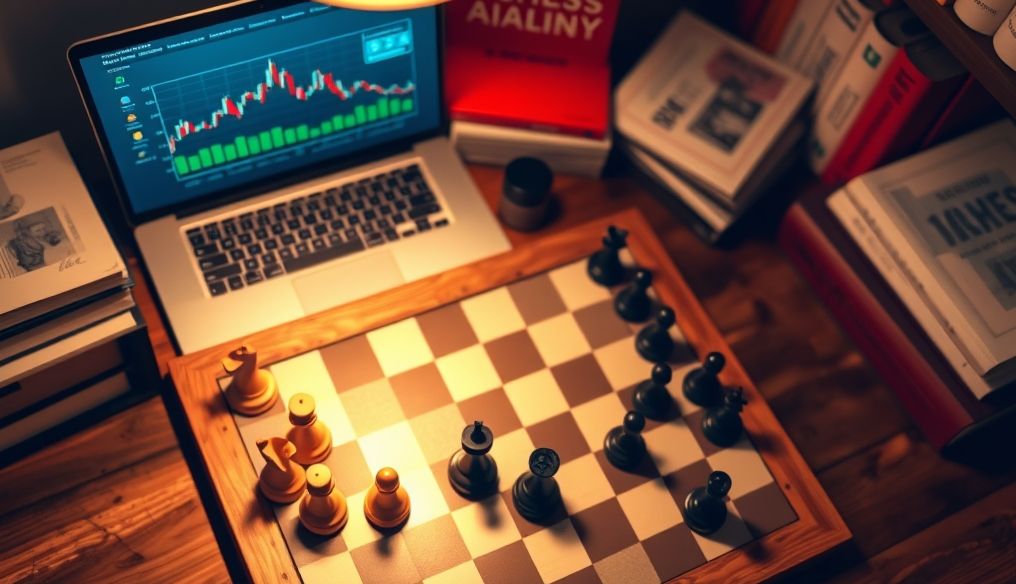What is a Memory Palace?
The memory palace, also known as the method of loci, is a mnemonic device that dates back to ancient Greece and Rome. It involves using a mental image of a familiar place, such as your home or your route to work, to associate information you want to remember with specific locations within that place.
Origin of the Name
The name "memory palace" comes from the mental visualization of the place being used. Imagine building a mental palace in your mind, where each room or corner represents a specific location. You can then "store" the information you want to remember in these locations.
How Does a Memory Palace Work?
A memory palace works by leveraging the brain's natural ability to remember places well. By associating new information with vivid and interesting mental images in familiar locations, it becomes easier to retrieve that information later.
Steps to Build a Memory Palace
Building a memory palace requires some planning and practice, but the results are worth the effort. Here are the basic steps:
- Choose a Familiar Location: Start by choosing a place you know well, such as your home, school, or your usual route. The more detailed the place, the better.
- Define a Clear Path: Establish a specific path within the location you've chosen. This path should be logical and easy to remember. For example, you can start at the front door, then move to the living room, then the kitchen, and so on.
- Identify Locations: Along the path you've chosen, identify a number of distinct locations. These locations can be specific objects, such as a table, chair, picture, or even a corner of the room.
- Associate Information with Locations: Now, associate the information you want to remember with each location you've identified. Use vivid and interesting mental images to make the connections strong. For example, if you're trying to remember a shopping list, you can imagine seeing milk flowing from the faucet in the kitchen, or finding eggs flying off the table in the living room.
- Retrieve the Information: When you need to remember the information, imagine yourself walking through your memory palace, stopping at each location. The mental images you've created will help you recall the information associated with each location.
Can Anyone Use a Memory Palace?
Yes, anyone can use a memory palace. It doesn't require any special talent or extraordinary abilities. All it takes is some practice and dedication.
Studies and Research
Many studies have shown that the memory palace can be very effective in improving memory. For example, a study published in the journal "Neuron" found that people who trained to use a memory palace for six weeks showed significant improvement in their spatial and verbal memory.
Benefits of Using a Memory Palace
- Improved Memory: A memory palace helps you remember information faster and more effectively.
- Increased Focus: Building a memory palace requires focus and attention, which helps improve the ability to concentrate.
- Creativity: The process of creating mental images encourages creativity and imaginative thinking.
- Self-Confidence: When you succeed in using a memory palace to remember information, you'll feel more confident in your mental abilities.
Tips to Improve Your Memory Palace Use
Here are some tips that can help you improve your use of a memory palace:
- Use Vivid and Interesting Mental Images: The more vivid and interesting the mental images you use, the easier they will be to remember.
- Make the Connections Strong: Make sure the connections between the information and the locations are strong and clear.
- Engage Your Senses: Use your senses to create more realistic mental images. Imagine hearing sounds, smelling scents, or touching things in your memory palace.
- Practice Regularly: The more you practice using a memory palace regularly, the better you will become at it.
- Be Patient: It may take some time before you master using a memory palace. Don't get discouraged if you don't see immediate results.
Practical Applications of a Memory Palace
A memory palace can be used in a variety of situations, including:
- Remembering Shopping Lists: Use a memory palace to remember the items you need to buy from the store.
- Remembering People's Names: Associate the person's name with a vivid mental image in your memory palace.
- Remembering Historical Facts: Associate historical facts with locations in your memory palace.
- Remembering Speeches and Presentations: Use a memory palace to remember the main points of your speech or presentation.
- Learning Foreign Languages: Associate new words with vivid mental images in your memory palace.
Common Mistakes to Avoid
When using a memory palace, there are some common mistakes to avoid:
- Choosing an Unfamiliar Location: If you choose a location you don't know well, it will be difficult for you to remember the locations in it.
- Not Defining a Clear Path: If you don't define a clear path, you may get lost in your memory palace.
- Using Faint Mental Images: If the mental images you use are faint and uninteresting, it will be difficult for you to remember them.
- Not Practicing Regularly: If you don't practice using a memory palace regularly, you will forget how to use it.
Conclusion
A memory palace is a powerful tool that can help anyone improve their memory. With practice and dedication, you can learn how to build your own memory palace and use it to remember information faster and more effectively. Don't hesitate to try it and explore its potential!
References:
- Maguire, E. A., Valentine, E. R., Wilding, J. M., & Kapur, N. (2003). Routes to remembering: The brains behind superior memory. Nature Neuroscience, 6(1), 90-95.
- Legge, E. L., Madan, C. R., Ng, E. T., & Caplan, J. B. (2012). Building a memory palace: The method of loci in virtual reality. PLoS ONE, 7(8), e42279.




